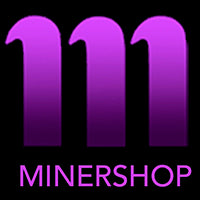
Blue Sodalite (Hackmanite) - Greenland
We have run out of stock for this item.
Weight and Dimensions
Shipping and Delivery
*Note: Please make sure to right-click and print (or save) ID card located in the photo gallery for your records*
The blue sodalite on this piece changes color when exposed to shortwave UV light, darkening to a purple - a unique hue compared to other Greenland sodalites due to the natural blue coloring. Under longwave the bright orange fluorescence is unmistakable, while under shortwave it starts out orange but quickly shifts to a rusty color due to the tenebrescence (see animation below to view the tenebrescent change). Many of the pieces from this locality within the complex are associated with a relatively bright fluorescent feldspar (in syenite). Like other feldspars, it fluoresces a magenta color. Matrix is lujavrite.
Bright green fluorescent areas are uranyl activated, unusual in that they occur mostly at the edges where the minerals intersect.
The natural color is a beautiful blue - one of the only blue sodalites which is strongly fluorescent, not to mention tenebrescent.


MINERAL OF THE MONTH: FLUORITE










